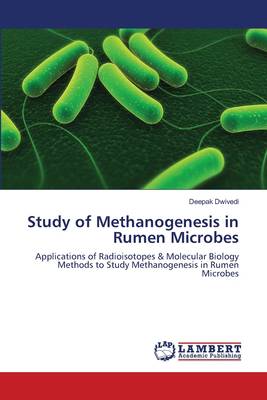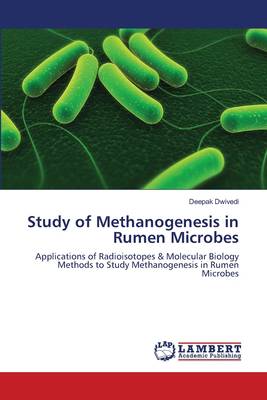
- Afhalen na 1 uur in een winkel met voorraad
- Gratis thuislevering in België vanaf € 30
- Ruim aanbod met 7 miljoen producten
- Afhalen na 1 uur in een winkel met voorraad
- Gratis thuislevering in België vanaf € 30
- Ruim aanbod met 7 miljoen producten
Zoeken
Study of Methanogenesis in Rumen Microbes
Applications of Radioisotopes & Molecular Biology Methods to Study Methanogenesis in Rumen Microbes
Deepak Dwivedi
Paperback | Engels
€ 47,95
+ 95 punten
Omschrijving
The Atmospheric methane Concentration has been increasing significantly over recent years at rates of 0.5% to 1.1% per year. it is more infrared absorbing capability per molecule and acts as major source of potential global warming. It is estimated that methane now contributes about 18% to global warming potential second only to carbon dioxide (CO2). Worldwide, approximately 81 million metric tons or 81 Tg (1 Tg=1 million tons; Wahlen et al. 1989), methane per year are emitted from the gastrointestinal tract of domestic ruminants and an additional 7 million metric tons of methane per year originated from the manure of these animals. Thus domestic ruminants are responsible for anthropogenic methane emissions in contributing global problems Methane production in the rumen not only represents an economical loss but also an ecological loss. This work was performed during the Master Degree Project. In this study methanogenesis by use of radioisotopes and molecular methods in rumen microbes were analyzed.
Specificaties
Betrokkenen
- Auteur(s):
- Uitgeverij:
Inhoud
- Aantal bladzijden:
- 80
- Taal:
- Engels
Eigenschappen
- Productcode (EAN):
- 9783659485893
- Verschijningsdatum:
- 20/11/2013
- Uitvoering:
- Paperback
- Afmetingen:
- 150 mm x 220 mm
- Gewicht:
- 127 g

Alleen bij Standaard Boekhandel
+ 95 punten op je klantenkaart van Standaard Boekhandel
Beoordelingen
We publiceren alleen reviews die voldoen aan de voorwaarden voor reviews. Bekijk onze voorwaarden voor reviews.











